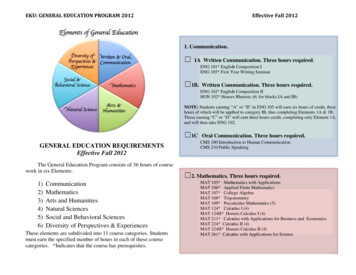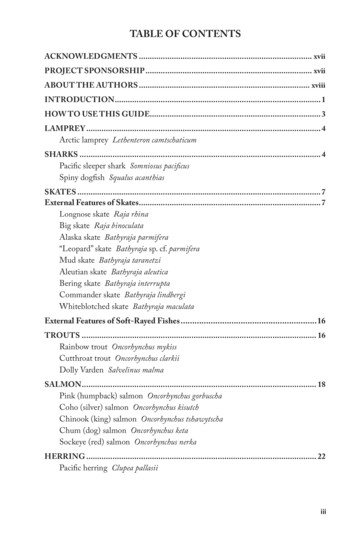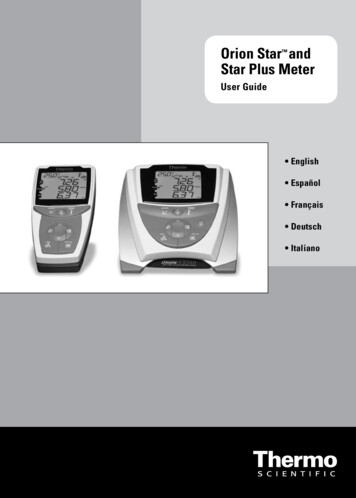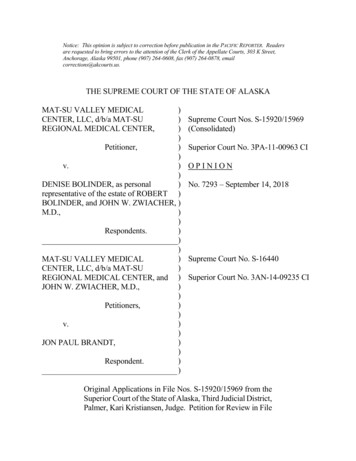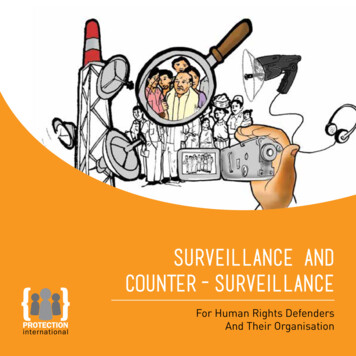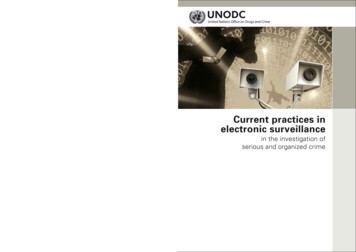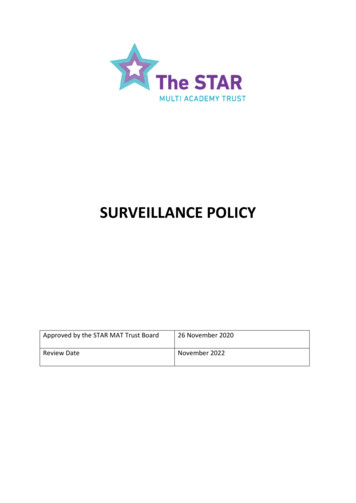
Transcription
SURVEILLANCE POLICYApproved by the STAR MAT Trust Board26 November 2020Review DateNovember 2022
IntroductionThis policy is concerned with the use and governance of surveillance technology, and theprocessing of Personal Data which has been collected by using surveillance technology. Thepolicy is written in accordance with various Data Protection legislation, which includes but isnot limited to the General Data Protection Regulation (GDPR) and the Data Protection Act2018 (DPA), and the Information Commissioner’s Office’s (ICO) surveillance code of practice.Queries about this policy should be directed to the STAR Multi-Academy Trust’s DataProtection Officer-Veritau.ScopeThis policy applies to all trust employees (both those employed directly by the trust andthose employed on behalf of the trust by a local authority (or other such body), anyauthorised agents working on behalf of the trust, including temporary or agency staff,governors, volunteers, and third party contractors.This Policy will refer to all individuals within scope of the policy as ‘employees’. Employeeswho are found to knowingly or recklessly infringe this policy may face disciplinary action.Surveillance is the monitoring of behaviour, activities, or other changing information for thepurpose of influencing, managing, directing, or protecting people. The school only usessurveillance in the context of CCTV and e-monitoring software.The school does not operate covert surveillance technologies and therefore this policy doesnot cover the use of such technology.CCTVThe school operates ‘Closed Circuit Television’ (CCTV) systems in order to ensure the schoolgrounds are safe, and to tackle and prevent criminal damage or vandalism of schoolproperty.Planning CCTV SystemsAny new implementation of CCTV systems will employ the concept of ‘privacy by design’which will ensure that privacy implications to data subjects will be considered before anynew system is procured. The prescribed method for this is through the completion of a DataProtection Impact Assessment (DPIA).The school has various statutory responsibilities to protect the privacy rights of datasubjects. Therefore during this planning phase the school will consider:i.The purpose of the system and any risks to the privacy of data subjects,
ii.That there are statutory requirements placed on the location and position of cameras.This means that cameras must be positioned to meet the requirement(s) of the intendedpurpose(s) and not exceed the intended purpose(s).iii.The obligation to ensure that the CCTV system can meet its intended purpose(s) alsomeans that the system specification must be such that it can pick up any details requiredfor these aims. For example the system must record with sufficient resolution toperform its task.iv.The system must also have a set retention period (the typical retention period is onemonth) and, where appropriate, the school must also have the ability to delete thisinformation prior than the set retention period in order to comply with the rights of datasubjects.v.That the school will need a level of access to the system and there will need to be theoption to provide other agencies (such as law enforcement agencies) with specificfootage if requested. If a data subject is captured and recorded by the system, then thatindividual also has the right to request a copy of that footage under subject accessprovisions.The school will ensure that a contract will be agreed between the school (as Data Controller)and the CCTV system provider. Consideration should also be given as to whether there areany joint data controller arrangements where the system is shared with anotherorganisation. Data Processing clauses must be included within the written contract if theprovider will be processing (e.g. monitoring, storing, accessing) the data on behalf of theschool.CCTV Privacy NoticesThe processing of personal data requires that the individuals that the data relates to (in thiscase any individuals captured by the CCTV) are made aware of the processing. Therefore theuse of CCTV systems must be visibly signed.The signage will include the purpose for the system (e.g. the prevention or detection ofcrime), the details of the organisation operating the system and who to contact about thesystem (including basic contact details). The signage must be clear enough that anyoneentering the recorded area will be aware that they are being recorded.A more detailed Privacy Notice for the use of CCTV must be maintained with the intention ofinforming data subjects of their rights in relation to surveillance data.
Access to CCTV RecordingsCCTV footage will only be accessed to comply with the specified purpose. For example if thepurpose of maintaining a CCTV system is to prevent and detect crime then the footage mustonly be examined where there is evidence to suggest criminal activity having taken place.The CCTV system will have a nominated Information Asset Owner who will be responsiblefor the governance and security of the system. The Information Asset Owner will authoriseofficers to access CCTV footage either routinely or on an ad-hoc basis.CCTV Footage DisclosuresA request by individuals for CCTV recordings that include footage of them should beregarded as a subject access request (SAR). For more information on the right of access forindividuals captured on CCTV, refer to the School’s Information Policy.If the school receives a request from another agency (for example a law enforcementagency) for CCTV recordings, then it will confirm the following details with that agency:i.the purpose of the request,ii.that agency’s lawful basis for processing the footage,iii.confirmation that not receiving the information will prejudice their investigation,iv.whether the School can inform the data subject of the disclosure, and if not, thereasons for not doing so.The School will liaise with its appointed Data Protection Officer should it have any concernsabout such requests.Review of CCTVCCTV systems must be reviewed biennially to ensure that systems still comply with DataProtection legislation and national standards. The Information Asset Owner should use thechecklist included in Appendix 1 of this policy to complete this review. It is the responsibilityof the Information Asset Owner to ensure reviews are completed and evidence of thosereviews taking place are maintained.e-Safety MonitoringThe school operates e-safety monitoring software systems in order to ensure the security ofthe systems and safeguard students. This is considered to be a form of non-covertsurveillance processing. The schools use products such as: Smoothwall, Google Admin andImpero.
Planning Monitoring SystemsAny new implementation of systems will employ the concept of ‘privacy by design’ whichwill ensure that privacy implications to data subjects will be considered before any newsystem is procured. The prescribed method for this is through the completion of a DataProtection Impact Assessment (DPIA).The school has various statutory responsibilities to protect the privacy rights of datasubjects. Therefore during this planning phase the school will consider:i.The purpose of the system and any risks to the privacy of data subjects,ii.The system must be installed in a way which meets the requirement(s) of the intendedpurpose(s) and not exceed the intended purpose(s).iii.The obligation to ensure that the system can meet its intended purpose(s) also meansthat the system specification must be such that it can pick up any details required forthese aims. For example the system must record with sufficient detail to perform itstask.iv.The system must also have a set retention period and, where appropriate, the schoolmust also have the ability to delete this information prior than the set retention periodin order to comply with the rights of data subjects.v.That the school will need a level of access to the system and there will need to be theoption to provide other agencies (such as law enforcement agencies) with specificsystem data if requested. If a data subject’s activity is captured and recorded by thesystem, then that individual also has the right to request a copy of that data undersubject access provisions.The school will ensure that a contract will be agreed between the school (as Data Controller)and the system provider. Consideration should also be given as to whether there are anyjoint data controller arrangements where the system is shared with another organisation.Data Processing clauses must be included within the written contract if the provider will beprocessing (e.g. monitoring, storing, accessing) the data on behalf of the school.System Privacy NoticesThe processing of personal data requires that the individuals that the data relates to (in thiscase any individuals whose activity is recorded by the system) are made aware of theprocessing. Therefore the use of monitoring systems must be visibly signed – for example onthe login screen of computers where the system is installed.
A more detailed Privacy Notice for the use of the system must be maintained with theintention of informing data subjects of their rights in relation to surveillance data. Thisprivacy notice should link to the privacy notice of any system provider.Access to Systems DataSystem data will only be accessed to comply with the specified purpose. For example if thepurpose of maintaining the monitoring system is to safeguard children then the data mustonly be examined where there is evidence that a child is at risk.The system will have a nominated Information Asset Owner who will be responsible for thegovernance and security of the system. The Information Asset Owner will authorise officersto access the system data either routinely or on an ad-hoc basis.Monitoring Data DisclosuresA request by individuals for system data that includes their activity should be regarded as asubject access request (SAR). For more information on the right of access for individualsrefer to the School’s Information Policy.If the school receives a request from another agency (for example a law enforcementagency) for system data, then it will confirm the following details with that agency:i.the purpose of the request,ii.that agency’s lawful basis for processing the data,iii.confirmation that not receiving the data will prejudice their investigation,iv.whether the school can inform the data subject of the disclosure, and if not, thereasons for not doing so.The school will liaise with its appointed Data Protection Officer should it have any concernsabout such requests.Review of SystemsSystems must be reviewed biennially to ensure that systems still comply with DataProtection legislation and national standards. The Information Asset Owner should use thechecklist included in Appendix 1 of this policy to complete this review. It is the responsibilityof the Information Asset Owner to ensure reviews are completed and evidence of thosereviews taking place are maintained.
ComplaintsComplaints by individuals about the use of surveillance systems, or the way surveillancedata is processed, should be treated as a data protection concern and the school’s dataprotection officer should be made aware.The School’s Data Protection Officer is:Schools Data Protection OfficerVeritau LtdCounty HallRacecourse LaneNorthallertonDL7 8ALschoolsDPO@veritau.co.uk01609 53 2526*Please ensure you include the name of the School in all correspondence with the DPORecords of ProcessingThe school has a duty under Article 30 of the GDPR to ensure that all instances of dataprocessing activity is recorded for regulatory inspection where required. The schoolmaintains an information asset register in order to fulfil this requirement.The school will ensure that the use of surveillance systems is recorded on their informationasset register. This should detail each separate surveillance system in use.Related DocumentsEmployees who are responsible for planning, maintaining, or reviewing the implementationof a surveillance system are encouraged to read the following related documents prior toimplementation: ICO Surveillance Code of Practice (External Link) The School’s Data Protection Impact Assessment (DPIA) Template (available throughVeritau)
Appendix 1 – Surveillance System ChecklistSchool Name:Name and Description ofSurveillance System:The purpose andrequirements of the systemare addressed by the system(i.e the cameras record therequired information)The system is still fit forpurpose and produces clearimages of adequateresolution.Cameras are sited ineffective positions to fulfiltheir task.Cameras are positioned sothat they avoid capturing theimages of persons notvisiting the premises and/orneighbouring properties.There are visible signsshowing that CCTV is inoperation. These signsinclude: Who operates the CCTV, Their contact details, What the purpose of theCCTV is.CCTV recordings are securelystored and access Notes:Notes:Notes:Notes:
The system has thecapability to transferrecordings to lawenforcement or to fulfil arequest for an individual’sown personal information.The system has a setretention period. Thisretention period should onlybe long enough to fulfil theCCTV’s purpose and notlonger. Outside of thisretention period informationshould be deletedThe system users should beable to selectively deleteinformation still inside theretention period to fulfil theright to erasure.All operators have beenauthorised by theInformation Asset Ownerand have sat theirmandatory data protectiontraining.This system has beendeclared on the corporateregister of surveillancesystems.Checklist Completed By:Name:Job tes:Notes:Notes:Checklist Reviewed and Signed By(Information Asset Owner):Name:Job Title:Date:
property. Planning CCTV Systems Any new implementation of CCTV systems will employ the concept of privacy by design [ which will ensure that privacy implications to data subjects will be considered before any new system is procured. The prescribed method for this is through the completion of a Data Protection Impact Assessment (DPIA).


